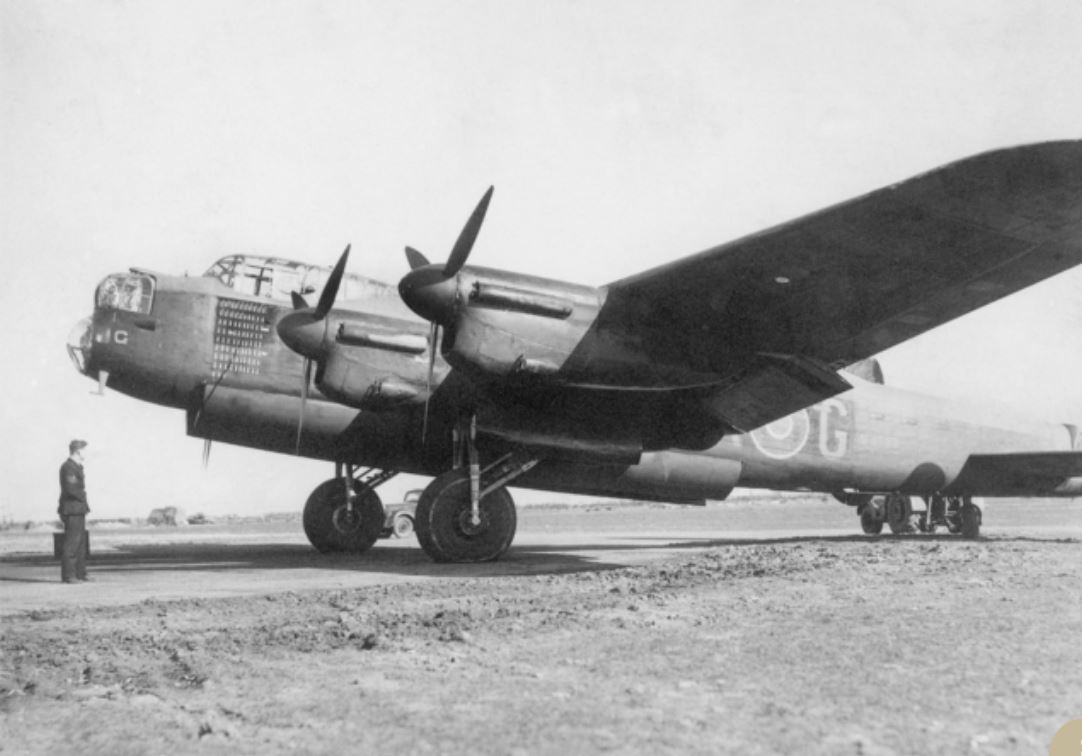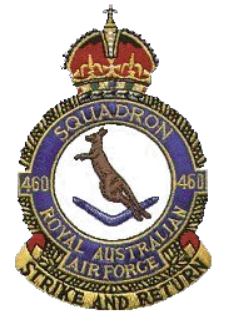Difference between revisions of "No. 460 Squadron RAAF"
From Our Contribution
(→Flying Personnel) |
|||
| (One intermediate revision by the same user not shown) | |||
| Line 14: | Line 14: | ||
==Brief History== | ==Brief History== | ||
| − | + | No. 460 Squadron, RAAF, was formed at Molesworth in the United Kingdom on 15 Nov 1941. The squadron became part of the RAF's Bomber Command and joined the strategic bombing campaign against Germany. Equipped with Vickers Wellington bombers, it mounted its first raid, against the German city of Emden, on 12 March 1942. In the ensuing three years the squadron was heavily committed to operations over Germany, Italy and German-occupied Europe. It operated, in succession, from airfields at Molesworth (15 Nov 1941 - 3 Jan 1942), Breighton (4 Jan 1942 - 14 May 1943), and Binbrook (14 May 1943 - 27 Jul 1945). | |
| − | |||
| + | It began operating Avro Lancasters in October 1942 and joined Bomber Command's 1 Group. The bulk of the squadron's operations formed part of the strategic bombing offensive against Germany, although prior to, and during, the D-Day landings in June 1944, it was employed in support of Allied ground operations. The squadron flew its last raid, against Berchtesgarden, on ANZAC Day 1945. | ||
| + | |||
| + | |||
| + | The squadron is regarded as having been the most efficient of the Australian bomber squadrons. It lost 181 aircraft on operations and suffered 1,018 fatal casualties (589 Australian) - the highest number of any of the Australian squadrons. Following the end of hostilities in Europe in April 1945, the squadron participated in Operation Manna, which involved the air-dropping of food to Dutch civilians during the first week of May 1945. The squadron relinquished its aircraft in early October 1945, and disbanded on the 25th of that month. | ||
| + | |||
| + | |||
| + | ===Flying Personnel=== | ||
| + | * [[Clifford Stanley Douglas]] 11 Feb - 1 Jun 1942 WIA and POW | ||
| + | * † [[Greer Winton Ottaway]] 14 Jul - 21 Nov 1944 KIA in flying battle over Germany | ||
| + | |||
| + | ===Ground Crew=== | ||
| − | |||
===Battle Honours=== | ===Battle Honours=== | ||
| Line 35: | Line 44: | ||
* 72 x Distinguished Flying Medals | * 72 x Distinguished Flying Medals | ||
* 1 x Distinguished Conduct Medal | * 1 x Distinguished Conduct Medal | ||
| − | |||
| − | |||
====Notes==== | ====Notes==== | ||
Latest revision as of 22:07, 24 February 2022
 460's G for George (Currently on display at the AWM, Canberra) | |
 | |
Contents
Brief History
No. 460 Squadron, RAAF, was formed at Molesworth in the United Kingdom on 15 Nov 1941. The squadron became part of the RAF's Bomber Command and joined the strategic bombing campaign against Germany. Equipped with Vickers Wellington bombers, it mounted its first raid, against the German city of Emden, on 12 March 1942. In the ensuing three years the squadron was heavily committed to operations over Germany, Italy and German-occupied Europe. It operated, in succession, from airfields at Molesworth (15 Nov 1941 - 3 Jan 1942), Breighton (4 Jan 1942 - 14 May 1943), and Binbrook (14 May 1943 - 27 Jul 1945).
It began operating Avro Lancasters in October 1942 and joined Bomber Command's 1 Group. The bulk of the squadron's operations formed part of the strategic bombing offensive against Germany, although prior to, and during, the D-Day landings in June 1944, it was employed in support of Allied ground operations. The squadron flew its last raid, against Berchtesgarden, on ANZAC Day 1945.
The squadron is regarded as having been the most efficient of the Australian bomber squadrons. It lost 181 aircraft on operations and suffered 1,018 fatal casualties (589 Australian) - the highest number of any of the Australian squadrons. Following the end of hostilities in Europe in April 1945, the squadron participated in Operation Manna, which involved the air-dropping of food to Dutch civilians during the first week of May 1945. The squadron relinquished its aircraft in early October 1945, and disbanded on the 25th of that month.
Flying Personnel
- Clifford Stanley Douglas 11 Feb - 1 Jun 1942 WIA and POW
- † Greer Winton Ottaway 14 Jul - 21 Nov 1944 KIA in flying battle over Germany
Ground Crew
Battle Honours
- Fortress Europe, 1940–1944
- France and Germany, 1944–1945
- Ruhr, 1940–1945
- Berlin, 1940–1945
- German Ports, 1940–1945
- Normandy, 1944
- Italy, 1943–1945.
Individual Honours (Australian personnel)
- 5 x Distinguished Service Orders
- 205 x Distinguished Flying Cross & 12 bars
- 1 x CGM
- 72 x Distinguished Flying Medals
- 1 x Distinguished Conduct Medal
Notes